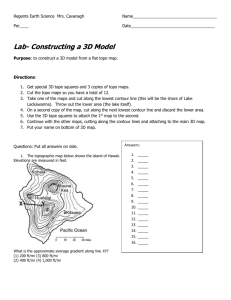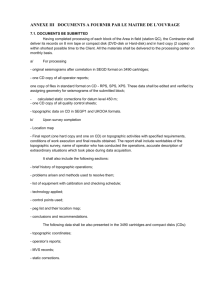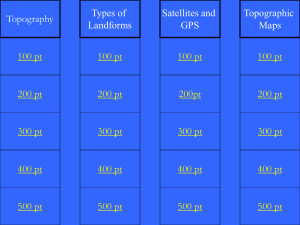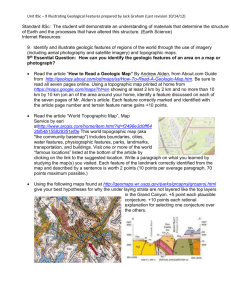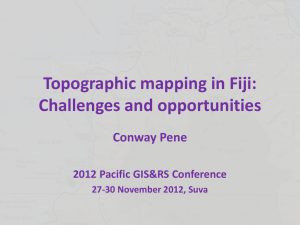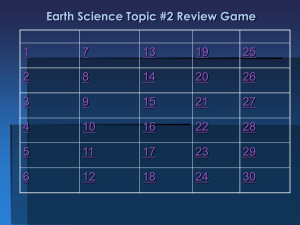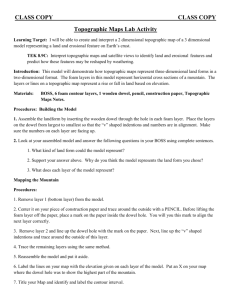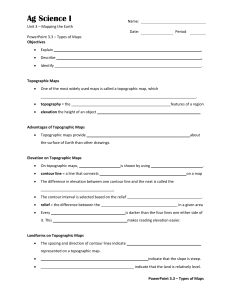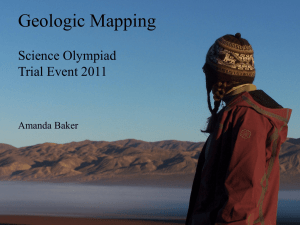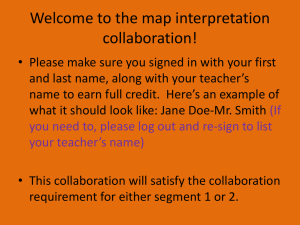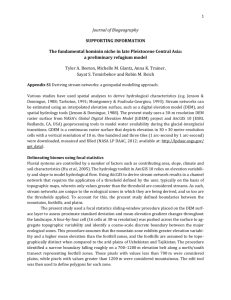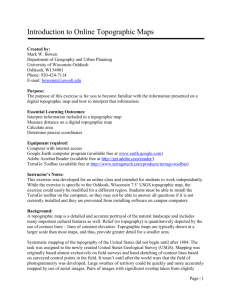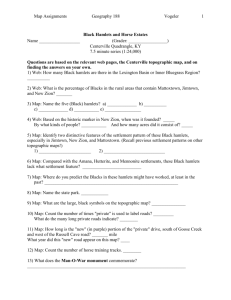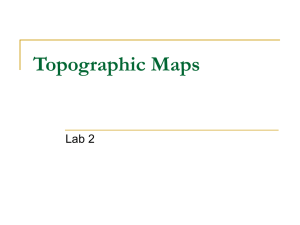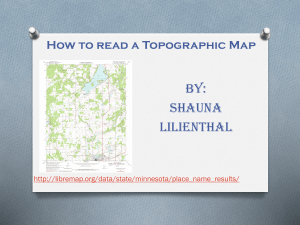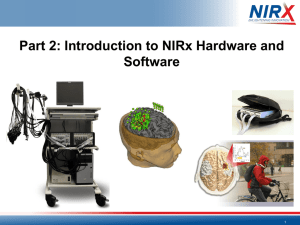Section 3.2 - CPO Science
advertisement
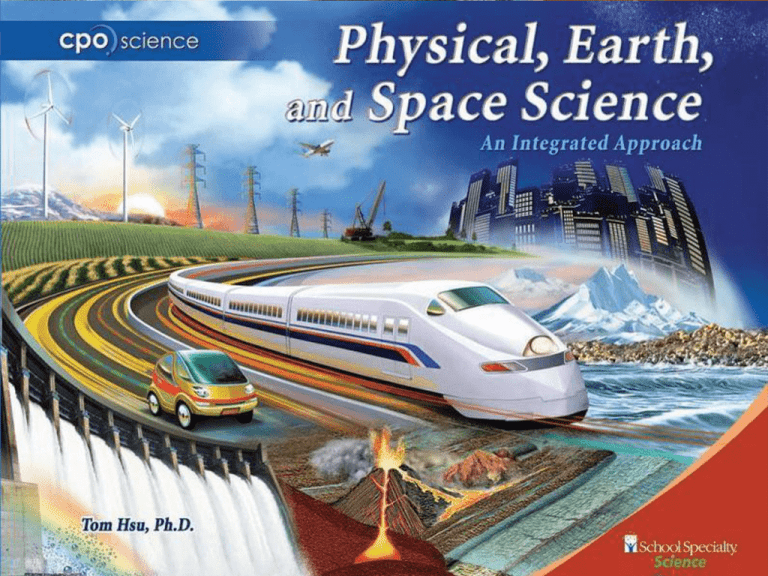
UNIT ONE: Science Skills Chapter 1 Measurement Chapter 2 The Scientific Process Chapter 3 Mapping Earth Chapter One: Measurement 3.1 Position, Coordinates, and Maps 3.2 Topographic Maps 3.3 Bathymetric Maps Section 3.2 Learning Goals Construct a topographic map and describe its features. Use relevant vocabulary, like relief and elevation, to describe map features. Describe the role of technology in topographic mapping advances over time. Investigation 3B Topographic Mapping Key Question: How do you make a topographic map from a 3dimensional surface? 3.2 Mapping Earth Relief describes the distance between high and low places on a map. Relief maps show mountains and other land features using raised bumps, shading or colors. What color shows the deep places in the ocean? 3.2 Mapping Earth Elevation means the height of an object measured from a reference level. Usually the reference level that is used on maps is called sea level. Can you estimate how far the fish is below sea level? Sea level is an average level of the ocean. 3.2 Topographic maps A topographic map is a map that shows elevation. Topographic maps use special lines called contour lines to show mountains and other land features. 3.2 Topographic maps Topographic maps show the difference in elevation through the use of contours. Contour lines connect points of equal elevation. 3.2 Technology and topographic maps In 1879, the United States Geological Survey (USGS) was created by an act of the U.S. Congress. 3.2 Making topographic maps Today, aerial photographs are overlapped to create a 3-D image of an area. 3.2 Making topographic maps Special software, computer technology, and stereo glasses are used to make topographic maps.



